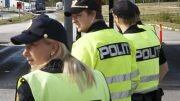Norway best in class to provide work for refugee women
Norway has fared far better than Denmark and Sweden in including refugee women and refugees with low education in working life, according to report.
The Nordic Council of Ministers are behind the report «Nordic integration and settlement policies for refugees» (pdf). Researchers from all the Scandinavian countries have studied the development of refugees and their family members, who have participated in the countries’ various introductory programs. The figures include 250,000 persons in the period from 2008 to 2016.
Best on employment
“The most important finding, from a Norwegian perspective, is that Norway succeeds in getting refugee women and refugees with low education into the workplace, compared to Sweden and Denmark,” co-author and researcher at Oslo Met, Kristian Rose Tronstad, tells FriFagbevegelse.
Denmark is best at getting refugees to work quickly, according to the report. Norway has, however, a better employment rate than both Sweden and notably Denmark over time. The gap between women and men participating in working life is also far lower in Norway than in the other Nordic countries.
“Although Norway is the best in class, that, however, isn’t to say that the results are very good,” Tronstad emphasises.
Room for improvement
“We can’t get on our high horse and boast that we are succeeding. There is still great potential for improvement. Integration is not exactly hunky-dory,” the researcher concludes.
More than 27,000 refugees and asylum seekers participated in the introduction programs last year, according to figures from Statistics Norway and Imdi. Of the 8,300 who completed them last year, 55 per cent went on to work or education. Between 60 and 70 per cent are working or learning, one to five years after they have completed the introductory programs.
Statistics
| Individual characteristics of refugees and family migrants to refugees in Norway, by year of settlement | |||||||||||
| 2008–2009 | 2010-2111 | 2012-2113 | 2014-2115 | 2016 | Total | ||||||
| Women | 48.5 | 45.6 | 48.2 | 38.7 | 31.9 | 41.9 | |||||
| Age (years) | 30 | 28.8 | 29.1 | 29.1 | 29 | 29.2 | |||||
| Age-group | |||||||||||
| 20–25 | 25.2 | 29.1 | 30.5 | 32.8 | 33.2 | 30.6 | |||||
| 26–35 | 46.8 | 46.2 | 46.1 | 44.5 | 43.6 | 45.3 | |||||
| 36–45 | 21.5 | 18.7 | 18.9 | 17.1 | 18.1 | 18.6 | |||||
| 46–55 | 6.4 | 5.9 | 4.6 | 5.7 | 5.1 | 5.5 | |||||
| Married | 43.2 | 39.1 | 42.4 | 43.4 | 47 | 43.1 | |||||
| Children | 41.7 | 27.6 | 29 | 23.5 | 22.2 | 27.4 | |||||
| Country of birth | |||||||||||
| Afghanistan | 9.7 | 12.6 | 7.6 | 4.9 | 3.1 | 7.2 | |||||
| Eritrea | 17.2 | 27 | 23.1 | 29.3 | 30.4 | 26 | |||||
| Iraq | 14.3 | 7 | 3.1 | 1.3 | 1.3 | 4.7 | |||||
| Iran | 2.9 | 5.3 | 5.7 | 2.9 | 1.5 | 3.6 | |||||
| Somalia | 14.1 | 21 | 30.5 | 18.7 | 4.8 | 17.7 | |||||
| Syria | 0.8 | 0.5 | 4.8 | 24.7 | 43.8 | 16.8 | |||||
| Other | 41.1 | 26.7 | 25.3 | 18.1 | 15 | 24 | |||||
| Education | |||||||||||
| Primary education | 50.8 | 47.6 | 48.3 | 39.2 | 33.4 | 43.1 | |||||
| Secondary education | 6.9 | 11.7 | 8.2 | 3 | 2.4 | 6 | |||||
| Tertiary education | 18.9 | 15.4 | 13.7 | 11.9 | 11.8 | 14 | |||||
| Missing values | 23.4 | 25.4 | 29.9 | 45.9 | 52.3 | 37 | |||||
| Centrality | |||||||||||
| Metropolitan area | 14.5 | 12.2 | 11.4 | 7.7 | 8.7 | 10.5 | |||||
| Other large cities | 21.2 | 17.3 | 15.2 | 13.3 | 16.5 | 16.3 | |||||
| Cities | 24.6 | 24 | 21.8 | 20.6 | 21 | 22.1 | |||||
| Towns | 24 | 24.2 | 27.4 | 28.7 | 25.1 | 26.2 | |||||
| Rural/remote | 15.7 | 22.3 | 24.2 | 29.7 | 28.6 | 24.9 | |||||
| Reason for being granted a residence permit | |||||||||||
| Family reunification | 19.2 | 13.5 | 13.2 | 12.5 | 12.6 | 13.9 | |||||
| Convention refugee | 64.3 | 71.7 | 71 | 74.5 | 75.4 | 71.9 | |||||
| Subsidiary protection | 1.1 | 0.8 | 1.7 | 0.8 | 0.5 | 1 | |||||
| UN Quota status | 15.3 | 14 | 14.1 | 12.2 | 11.5 | 13.2 | |||||
| Other | 0 | 0 | 0 | 0 | 0 | 0 | |||||
| Participants (N) | 7,543 | 8,655 | 9,014 | 12,691 | 9,889 | 47,792 | |||||
Related articles
Integration through outdoor life
Only two out of ten Norwegians believe integration is going well
Work permits for asylum seekers at integration centres
© #Norway Today









